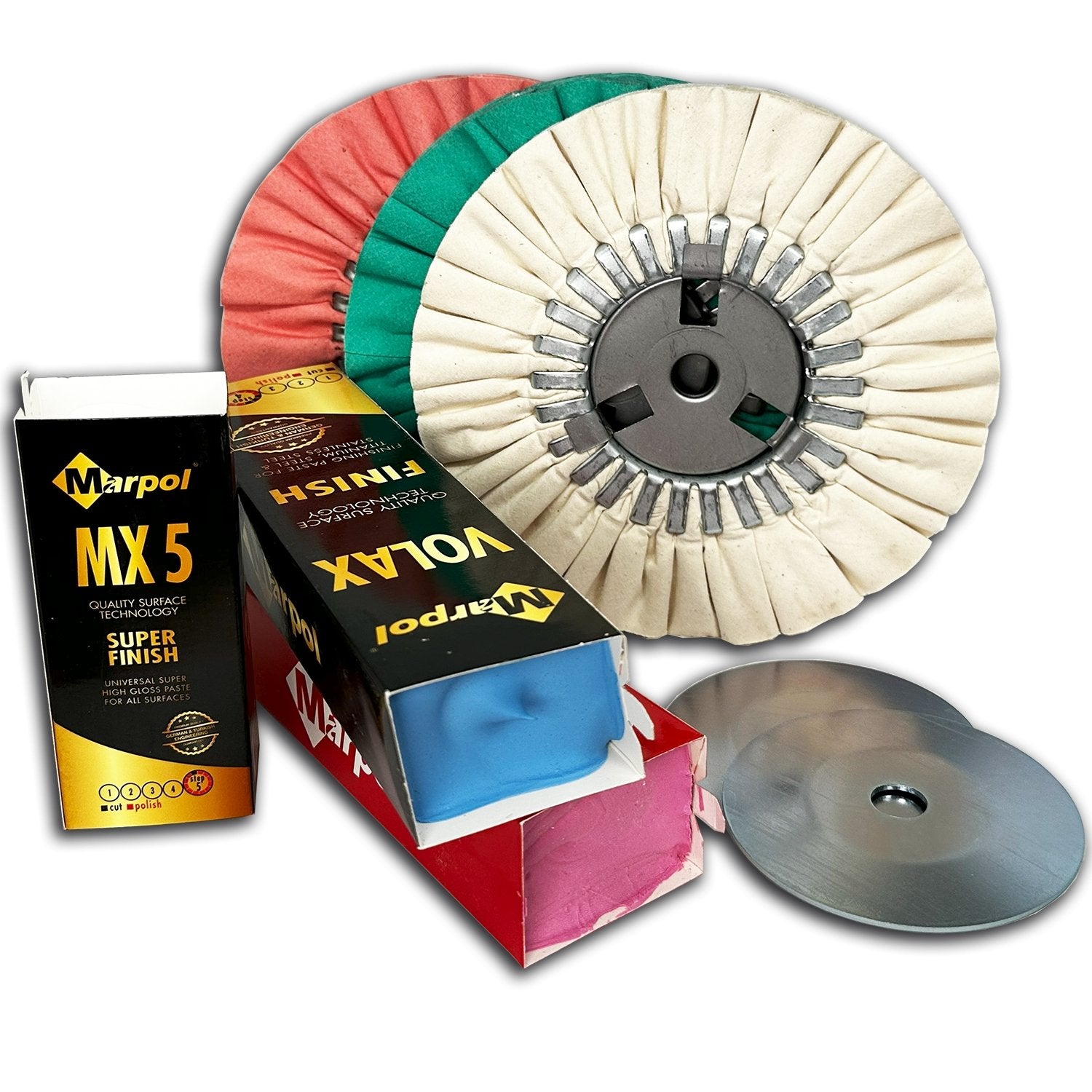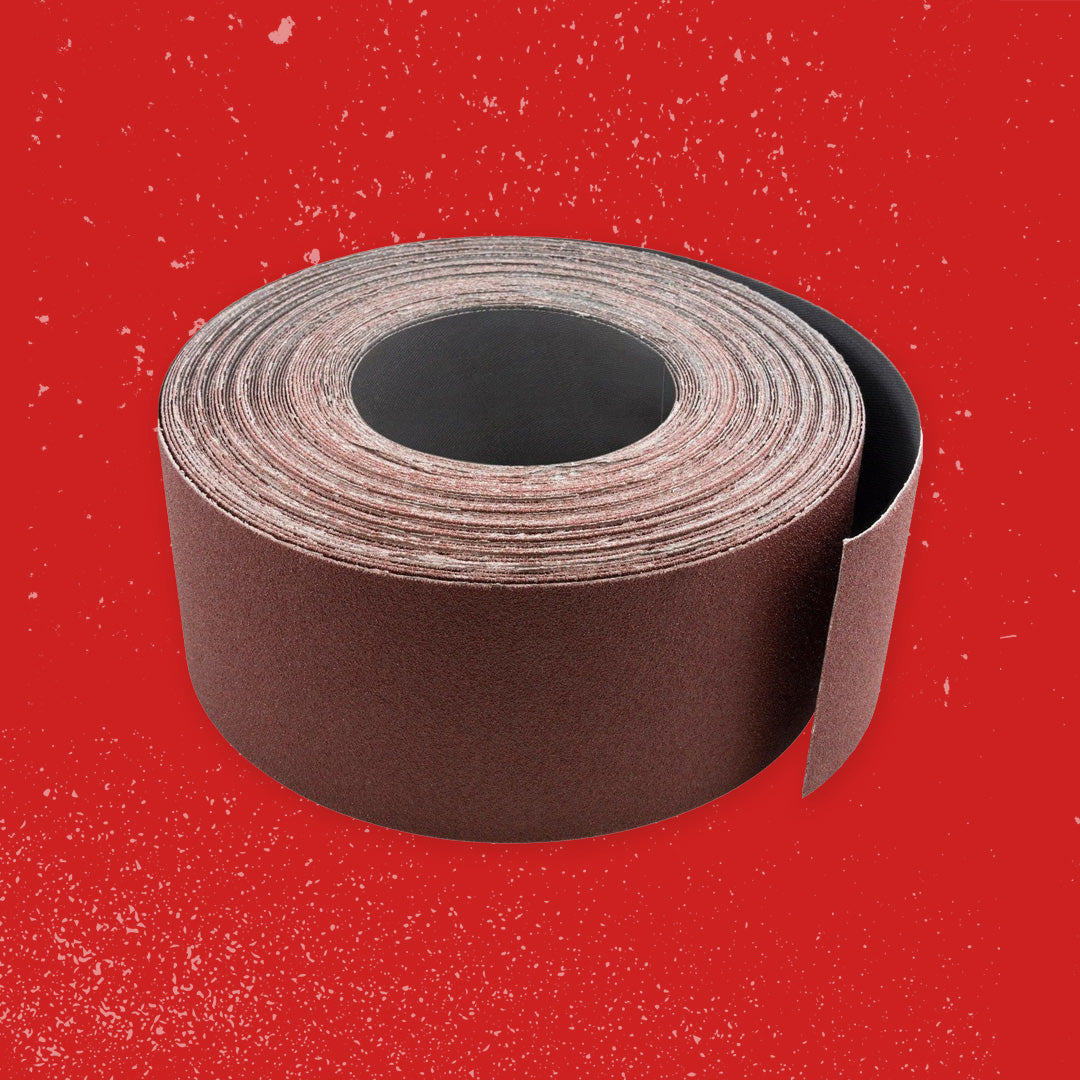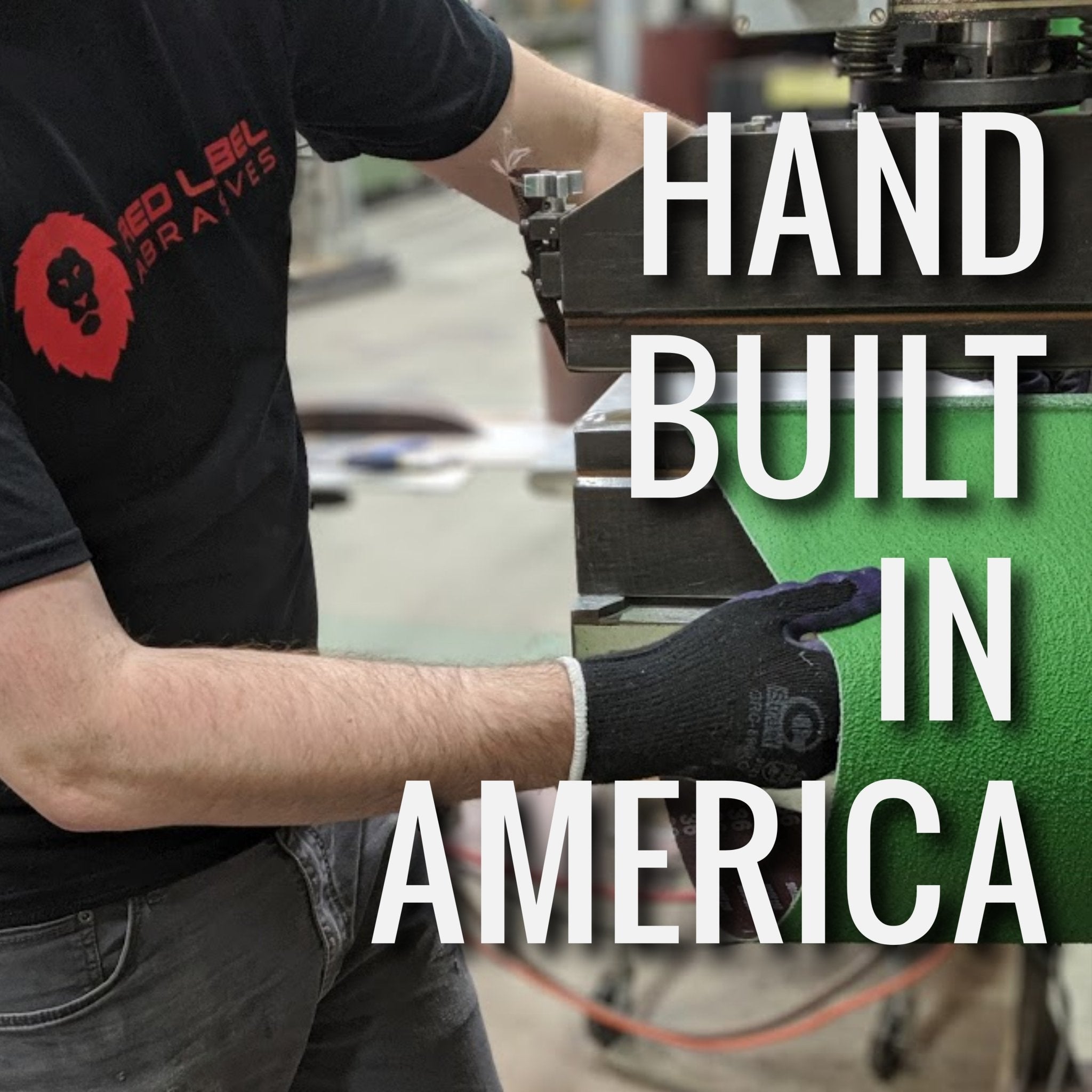Your Cart is Empty
Free Shipping over $150 (Excludes Oversized Products)
Free Shipping over $150 (Excludes Oversized Products)
Sanding Belts
Sanding Discs

How To Choose Sandpaper For Auto Body Repair
by David Kranker 3 min read

Collisions, windblown shopping carts, severe weather, poorly aimed baseballs... there are different ways that a motor vehicle can sustain surface damage. Regardless of whether the outcome is a deep dent or minor scratches, using the right sandpaper during the repair process is a key part of producing quality results.
What Grit Should You Use?
The first step is choosing a sandpaper with the right grit. In general, grit numbers range from around 40 to 4000 and up. The lower the number, the coarser the sandpaper. The first rule of auto body repair is that you should start with the least aggressive sandpaper you can that will still get the job done. The last thing you want to do is cause damage in the way of deep scratches that will require more work to remove.
Low-grit sandpapers (typically below 400)
Low-grit sandpapers are more appropriate for auto body repair jobs that require rough surface areas to be flattened out. This can happen if the vehicle has received several successive coats of paint, resulting in an uneven, patchy surface.
Abrasives in the 60 to 80 grit range are good to use when there are deeper scars or rust to sand down. You can use 120 grit when there are rust spots or scratches that aren’t as severe and 220 grit to bring down rough edges from body filler. 320 grit is ideal for feather edging compounds to get the body ready for priming.
Use of abrasives in this grit range should be limited because low-grit sandpaper can leave scratches on more even coats of paint.
Medium grit, which starts at around 400 to 600
Medium grit does an effective job at smoothing the vehicle surface before a base coat is applied. It’s strong, but fine enough to smooth away rough areas without scratching up the metal.
600 grit is good for removing imperfections after a high build primer has been applied to the body. 800 grit is great for sanding the final finish primers before primer sealers or paint.
High-grit sandpaper (1000 and up)
High-grit sandpaper is best suited for eliminating scratches and minor imperfections. Once the vehicle has received a new coat of paint, a sandpaper disc in this range can deliver a smooth finishing touch.
1000 and 1200 grit abrasives are great for sanding over new paint, but it’s recommended that you use a wet sand technique for this application. You can follow the 1000 or 1200 grit sand with 1500 grit to ensure the entire surface is smooth and level. 2000 grit can be used for a final wet sand to create an ultra smooth finish before applying a rubbing compound.
When applied to an orbital sander, high-grit sandpapers make it possible to cover larger vehicles like vans or trucks in a matter of hours.
What Sandpaper Material is Recommended?
Aluminum oxide is one of the most popular abrasives for good reason. During the sanding process, it fragments in a manner that retains its cutting edges and allows the sanding belt or disc to be used longer.
Aluminum oxide has various coating options available, but closed-coat is the recommended solution because the grains cover up to 95% of the disc surface, enabling it to do a smooth and effective job on both ferrous and nonferrous metals.
For auto body repair, use aluminum oxide sanding discs that have been specially designed for the automotive market. The best tools typically have a fully waterproof backing with a thick hook and loop for added durability and performance quality. They offer a fast cut, deliver professional results, and have a long disc life, ensuring that you get optimal return on your investment.
About Red Label Abrasives
At Red Label Abrasives, we have decades of experience in helping customers identify the tools needed to deliver thorough and professional grinding, polishing, and finishing results. Our abrasive technicians have the extensive product knowledge you need to find the right sanding discs, sanding belts, or sanding sheets for your needs and will even work with you to custom-design a solution for your unique application. For more information or to discuss your auto body repair needs, please contact us by filling out a contact form or calling (844) 824-1956.
ABOUT THE AUTHOR
David Kranker is a writer and creative maker who has been covering the abrasive and knife-making industries on the Red Label Abrasives Blog since 2020. David spends his time continually researching sanding and bladesmithing to provide readers with the latest and greatest information. In his free time, David utilizes abrasives for many different home and auto projects at his home in Delton, MI.
Our Most Popular Abrasives

EdgeCore Ceramic Sanding Belts

EdgeCore Ceramic Flap Discs

Buffing Kit
Shop By Product Category





Why Choose Red Label?







